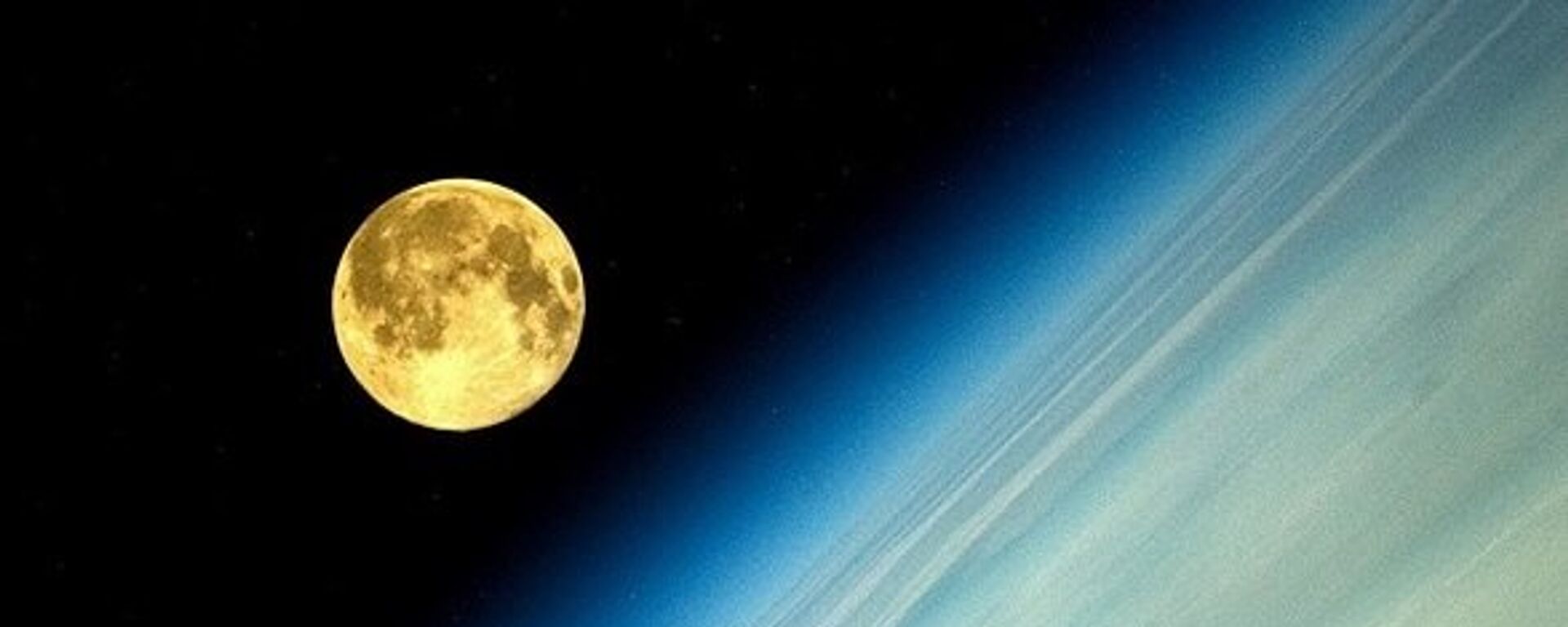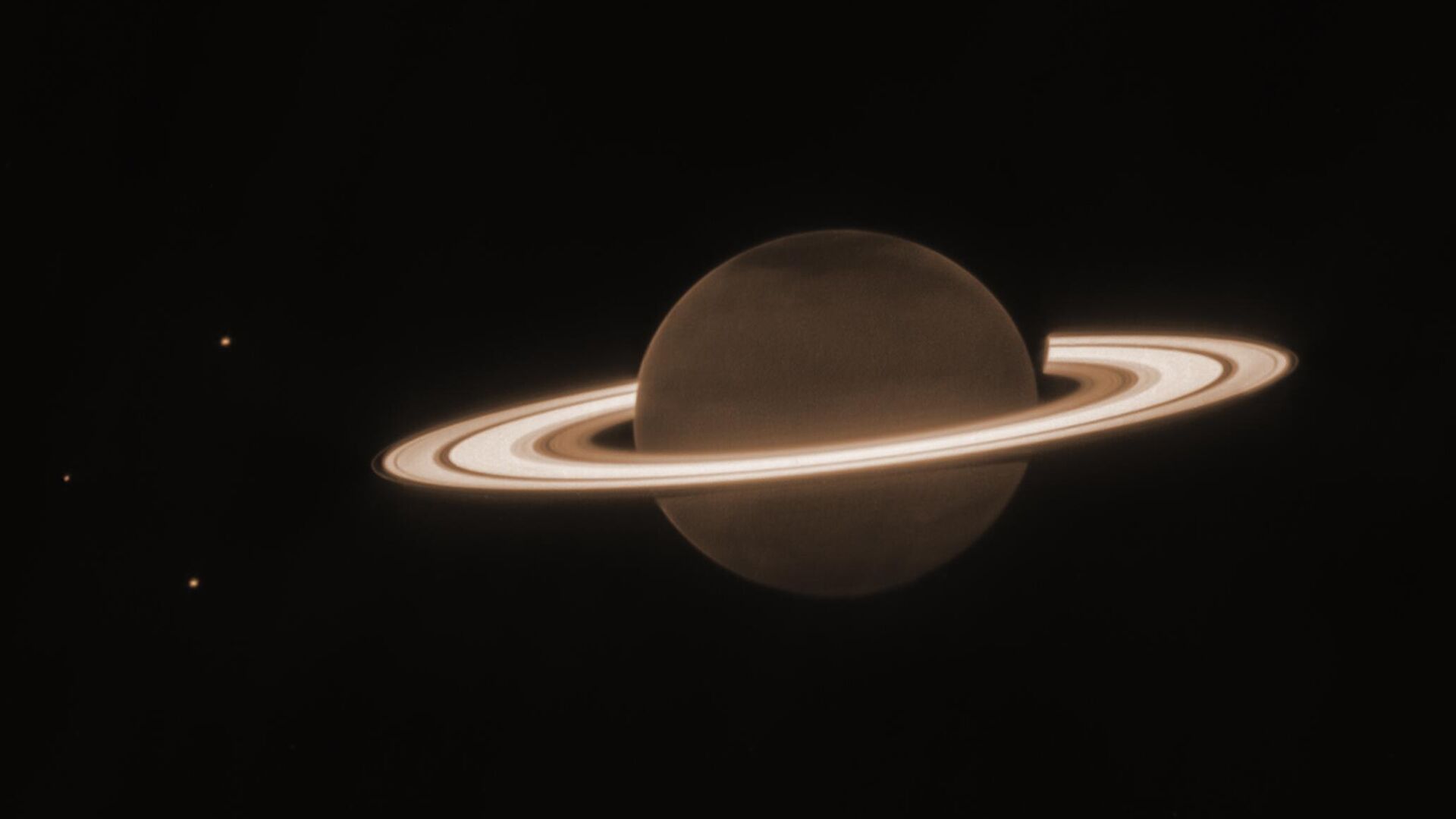https://sputnikglobe.com/20230929/saturns-rings-and-moons-collision-course-revealed-by-supercomputer-simulations-1113812094.html
Saturn's Rings and Moons: Collision Course Revealed by Supercomputer Simulations
Saturn's Rings and Moons: Collision Course Revealed by Supercomputer Simulations
Sputnik International
Recent research suggests that Saturn's iconic rings may have formed from the cataclysmic collision of two icy moons, akin in size to the present-day Dione and Rhea.
2023-09-29T23:11+0000
2023-09-29T23:11+0000
2023-09-29T23:11+0000
beyond politics
science & tech
nasa
university of glasgow
space
space exploration
saturn
https://cdn1.img.sputnikglobe.com/img/07e7/07/01/1111601948_0:108:2064:1269_1920x0_80_0_0_c0765f1f1d03348941cfc350e4f72867.jpg
New insights into the formation of Saturn's rings and moons have emerged from a comprehensive study employing high-resolution supercomputer simulations. The research, a collaboration between NASA and the universities of Durham and Glasgow, proposes that Saturn's rings could be the remnants of a colossal collision between two ice-rich precursor moons that shattered approximately a few hundred million years ago.One key finding of the research, conducted using the COSMA supercomputer at Durham University, is that the impact of icy moons likely resulted in the formation of Saturn's icy rings. When these precursor moons collided, the rock within their cores was scattered less widely than the surrounding ice, leading to the creation of ice-rich rings.This theory aligns with the observed purity of Saturn's rings, which are made up almost entirely of ice and have accumulated minimal dust pollution since their formation.The simulations explored nearly 200 different scenarios of moon collisions, revealing a wide range of outcomes that could have scattered the right amount of ice into Saturn's Roche limit. The Roche limit represents the outer boundary where a planet's gravitational force can disintegrate larger bodies of rock or ice. Material orbiting beyond this limit could have clumped together to form some of Saturn's current moons.This groundbreaking research challenges previous explanations for the composition of Saturn's rings, as alternative theories failed to account for the near absence of rock within the rings. By using supercomputer simulations, scientists have gained invaluable insights into the history of Saturn's system, highlighting the dynamic nature of our solar system's evolution.Dr. Vincent Eke of Durham University remarked on the findings, emphasizing how the collision hypothesis provides a natural explanation for the ice-rich nature of Saturn's rings. Meanwhile, Dr. Jacob Kegerreis, a NASA research scientist and Durham University graduate, expressed excitement about using simulations to explore the Saturn system's evolution further, including its potentially habitable moons.The study was published in The Astrophysical Journal.
https://sputnikglobe.com/20230830/rare-blue-supermoon-to-appear-this-week-with-special-appearance-from-saturn-1112975661.html
Sputnik International
feedback@sputniknews.com
+74956456601
MIA „Rossiya Segodnya“
2023
News
en_EN
Sputnik International
feedback@sputniknews.com
+74956456601
MIA „Rossiya Segodnya“
Sputnik International
feedback@sputniknews.com
+74956456601
MIA „Rossiya Segodnya“
saturn, what created saturn rings, saturn exploration, dione and rhea of saturn, saturn studies, space studies, what do saturn rings consist of
saturn, what created saturn rings, saturn exploration, dione and rhea of saturn, saturn studies, space studies, what do saturn rings consist of
Saturn's Rings and Moons: Collision Course Revealed by Supercomputer Simulations
A series of supercomputer simulations has unraveled the long-standing mystery surrounding the origins of Saturn's majestic rings and icy moons. Recent research suggests that Saturn's iconic rings may have formed from the cataclysmic collision of two icy moons, akin in size to the present-day Dione and Rhea.
New insights into the formation of Saturn's rings and moons have emerged from a comprehensive study employing high-resolution supercomputer simulations. The research, a collaboration between NASA and the universities of Durham and Glasgow, proposes that Saturn's rings could be the remnants of a colossal collision between two ice-rich precursor moons that shattered approximately a few hundred million years ago.
One key finding of the research, conducted using the COSMA supercomputer at Durham University, is that the impact of icy moons likely resulted in the formation of Saturn's icy rings. When these precursor moons collided, the rock within their cores was scattered less widely than the surrounding ice, leading to the creation of ice-rich rings.
This theory aligns with the observed purity of Saturn's rings, which are made up almost entirely of ice and have accumulated minimal dust pollution since their formation.
The simulations explored nearly 200 different scenarios of moon collisions, revealing a wide range of outcomes that could have scattered the right amount of ice into Saturn's Roche limit. The Roche limit represents the outer boundary where a planet's gravitational force can disintegrate larger bodies of rock or ice. Material orbiting beyond this limit could have clumped together to form some of Saturn's current moons.

30 August 2023, 00:46 GMT
This groundbreaking research challenges previous explanations for the composition of Saturn's rings, as alternative theories failed to account for the near absence of rock within the rings. By using supercomputer simulations, scientists have gained invaluable insights into the history of Saturn's system, highlighting the dynamic nature of our solar system's evolution.
Dr. Vincent Eke of Durham University remarked on the findings, emphasizing how the collision hypothesis provides a natural explanation for the ice-rich nature of Saturn's rings. Meanwhile, Dr. Jacob Kegerreis, a NASA research scientist and Durham University graduate, expressed excitement about using simulations to explore the Saturn system's evolution further, including its potentially habitable moons.
"The apparent geological youth of Saturn's rings has been a puzzle since the Voyager probes sent back their first images of the planet. This collaboration has allowed us to examine the possible circumstances of their creation, with fascinating results," noyes Dr. Luis Teodoro of the University of Glasgow.
The study was published in
The Astrophysical Journal.



